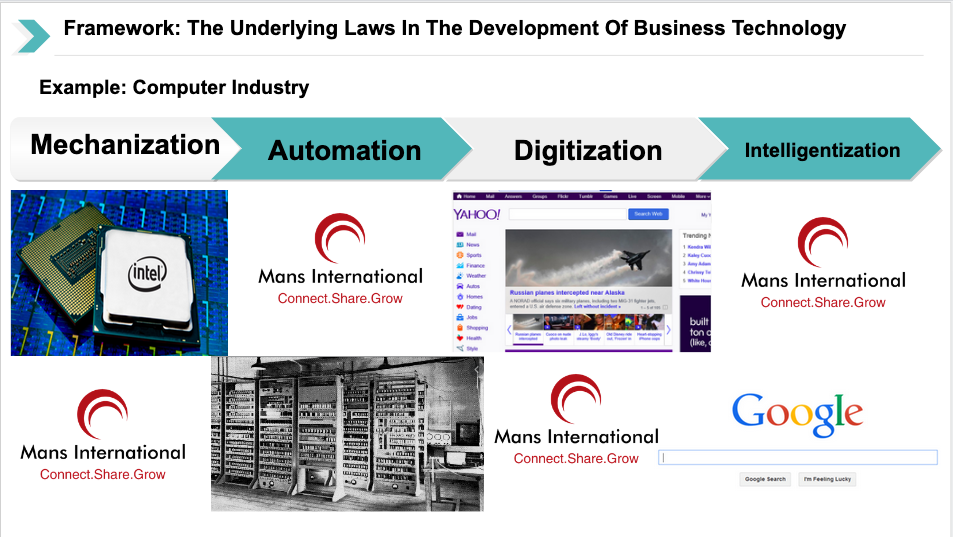How to find a business opportunity
Some entrepreneurs and business owners have asked me how to find business opportunities, especially during the COVID-19 epidemic. Although this largely depends on your own experience, knowledge, and available resources, today I would like to introduce an underlying law of technological development. This will help you judge the technology trends that might impact your business.
What are the underlying laws in the development of business technology?
Li Feng, the founding partner of Frees Fund, gave a framework to answer this question:
The development of any business technology has the following four stages:
- Mechanization
- Automation
- Digitization
- Intelligentization
Let’s take the computer industry as an example:

1. Mechanization – Computers produced by IBM are equipped with chips developed by Intel, which greatly improves labour efficiency.
2. Automation – In the 1940s, the first automated computer was born. This computer adds logic and algorithms, as well as storage functions, which can automatically calculate.
3. Dataization – Microsoft has introduced new sensors: keyboard and mouse, which improve people’s ability to process text and turn text into data. The widespread use of the Internet has generated a large amount of data on the Internet, including structured data such as Excel tables and unstructured data such as video, audio, and photos. Yahoo first introduced the classification management of data, which is convenient for people to search for and manage all kinds of data。
4. Intelligentization – Google has invented a search engine because it has tons of flowing data, which greatly improves the efficiency and accuracy of the search. The major reason why Google can become the hegemony is that it has the most data, and the circulation cost of the data itself is literally minimum.
Let us take the automobile industry as another example.
1. Mechanization – In the 1920s, Ford invented the first economical and practical car-Model T. The relatively low price is partly due to the mechanization of Ford’s assembly line production instead of individual handcrafting.
2. Automation – The car has changed from gear operation to automatic gear operation. Major car manufacturers have also introduced automatic reversing function. There is also a constant speed cruise, which is changed from stepping on the accelerator to being able to be controlled by buttons.
3. Digitization – Chips appeared in the 1960s, and with the advent of sensors, automakers can collect more and more machine status and information. In addition, various sensors are installed on the car, such as cameras, radars, and positioning systems. Do you think the data collected by the vehicles is enough to achieve self-driving? Not enough. Driving is carried out in a relatively open environment, and various data including weather, environment, road surface, traffic signals, other vehicles and pedestrians need to be considered comprehensively. Only when enough data is collected can real autonomous driving be realized.
4. Intelligentization – With the development of the Internet of Vehicles and the Internet of Things (IoT), autonomous driving will eventually be realized. But autonomous driving will not be realized so quickly. Take reversing radar as an example, this process from beep prompts, to millimetre wave radar, to reversing camera, to automatic parking took 15 years. Complete artificial intelligence, autonomous driving, will be much slower.




